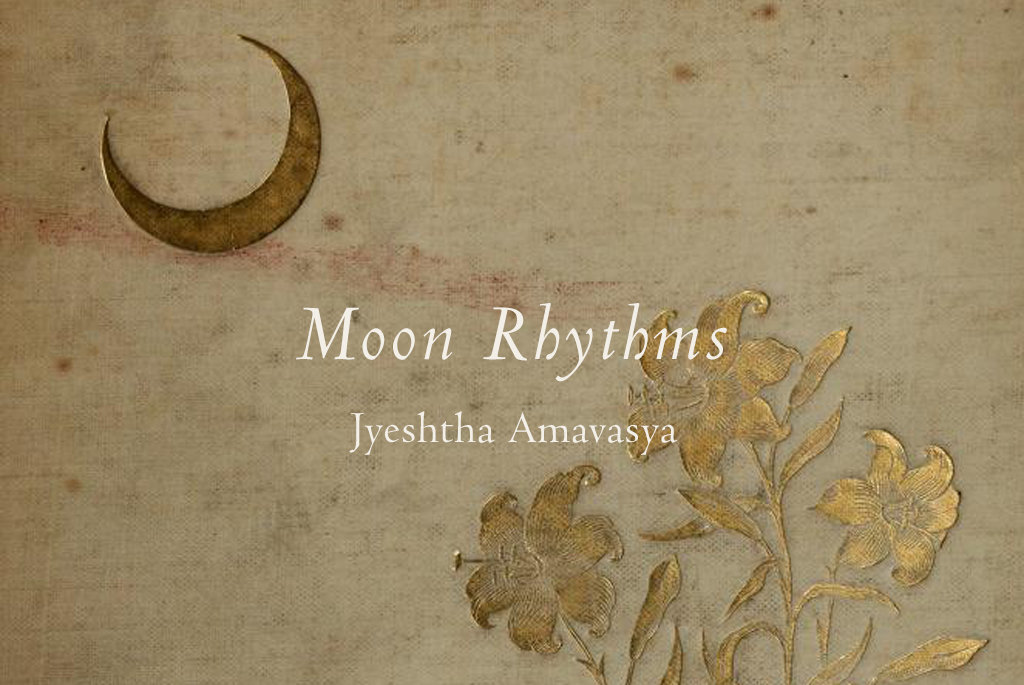Nilakshi Sharma

“What’s in a name? That which we call a rose by any other name would smell as sweet”, said Shakespeare in his play Romeo and Juliet.
But what about the Moon? The Moon is ever changing. It is never still. It is not the same every night. It grows into fullness. It wanes into nothingness. And in each state, each phase its energy is subtly different. And yet the Moon is still the Moon for us, even when we can’t see it as on a New Moon or Amavasya night. But to each of its phases, its qualities and energies there is a subtle alteration.
Today we are most familiar with the names that correspond to the visible phases of the Moon: Amavasya or the New Moon; Purnima or the Full Moon; Ekadashi – the Moon on the eleventh day of the waxing and the waning phase; and the crescent Moon – which emerges the day after Amavasya.
But once upon a time, the Moon was referred to with a wider range of names. These names acknowledged and celebrated the qualities, mythology, properties and powers of the Moon. One of the best-known lists of Moon names comes from a Sanskrit dictionary – the Amarkosha.
In the Amarkosha there are twenty names for the Moon. The Amarkosha is the common name for the Nāmaliṅgānuśāsanam, an ancient thesaurus in Sanskrit, written by Amarasimha. It is thought by many to be one of the oldest extant koshas (dictionary). It was written approximately 1500 years ago. These Sanskrit names for the Moon celebrate its beauty and acknowledge its powers; they are comments on the appearance of the Moon and its mythical abilities; they see the Moon as the harbinger of beauty but also as a philosophical concept. When you consider the twenty names in their entirety you can also see the outlines of a culture where the Moon was accorded centre space. And how each name celebrated the Moon in different ways.
Twenty Names of the Moon
- Himanshu: One whose rays are cooling in nature
- Chandrama: That which offers cooling and resembles Camphor in colour
- Chandra: That which is radiant; that which shines bright; that which glimmers
- Indu: A bright drop
- Kumudabandhava: One who is or that which is a friend of Lotuses (water lilies)
- Vidhu: A name used to refer to gods (Brahma & Vishnu); that which “shone in ten directions having got the over-lordship of the seven worlds by tapas”; one who is lonely; to shake off or expel that which is undesirable
- Sudhanshu: A compound word that translates as one who is the “repository of the beverage of the gods (amruta)”
- Shubhranshu: One whose very parts or rays are “radiant, shining, beautiful, splendid, white”
- Aushadhi: That which heals; one who is the lord of the healing herbs
- Nishapati: One who is the ruler of the Night
- Abja: One who is born from water; also lotus
- Jaevatak: That which rejuvenates; re-energises Jiva
- Soma: Nectar of the gods
- Glau: Of the earth, like Camphor, according to some this word also has connotations of one who gives sorrow
- Mrigank: Deer-marked
- Kalanidhi: Ruler of the Kalas (the 16 kalas – goddesses, arts and also divisions of time)
- Dwijraja: Lord of the twice borns
- Shashdhar: One who is marked by the shape of a hare
- Nakshetresa: Lord of the 27 nakshatras
- Kshapakara: One who decreases, that which wanes
Disclaimer: We at Paro are not Sanskrit scholars. So while we have researched the meaning of the names to the best of our ability, we cannot claim to be an authority for these meanings of the twenty names.





